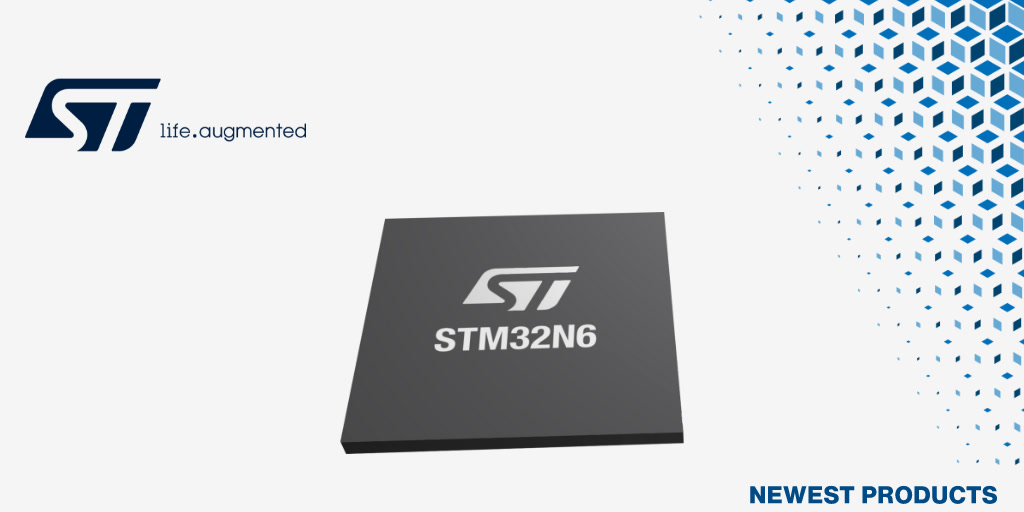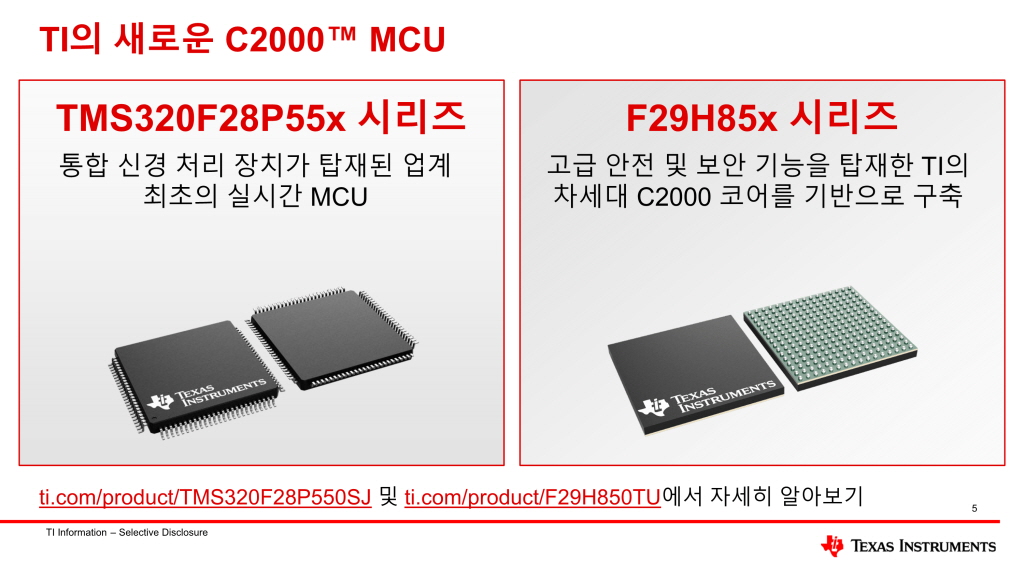브러시리스(BL) DC 모터, 즉 BLDC 모터는 기존 DC 모터의 최대 단점인 브러시와 정류자가 없어 마모가 적고 손실되는 에너지가 적어 유지보수와 에너지 효율이 높다는 큰 장점이 있다. 이에 최근 △드론 △로봇 △모빌리티 △산업자동화 △가전 △기계설비 등 대부분의 제품 및 설비 개발의 동향에서 BLDC 모터가 주로 채택되고 있다.
BLDC 모터, 실시간 고장 진단 어려움
ST·TI, NPU 탑재 MCU로 엣지 AI 진단
CNN 모델 기반 BLDC 모터 진단 성능 高
브러시리스(BL) DC 모터, 즉 BLDC 모터는 기존 DC 모터의 최대 단점인 브러시와 정류자가 없어 마모가 적고 손실되는 에너지가 적어 유지보수와 에너지 효율이 높다는 큰 장점이 있다. 이에 최근 △드론 △로봇 △모빌리티 △산업자동화 △가전 △기계설비 등 대부분의 제품 및 설비 개발의 동향에서 BLDC 모터가 주로 채택되고 있다.
이러한 BLDC 모터는 신뢰성이 높지만 △베어링 고장 △과열 △전기적 문제 △기계적 손상 등 고장과 손상에서 자유로울 수 없으며 특히 드론, 모빌리티 등의 제품에서 모터의 손상은 심대한 사고로 이어질 수 있어 고장 예측과 예지 보전에 대한 기능이 중요하게 대두되고 있는 것이다.
과거 모터 및 설비의 예지보전은 제품의 외부에 설치돼 센싱과 데이터 수집, 고장 진단과 알림 등이 별도의 프로세스 상에서 수행됐다. 이에 예지보전 솔루션과 제품을 제공하는 업체를 선정하고 제품을 도입하는 데 시간과 비용이 소요됐으며 시스템 복잡성도 높아지는 비효율이 개발 과정에서 발생하게 됐다.
최근 AI 기술의 발전과 반도체 성능의 향상은 이러한 고장 진단의 메커니즘을 엣지단에서 통합하는 모습들을 보이고 있다. ST, TI 등 MCU 메이커들은 ‘엣지 AI’ 기능 안에 고장 진단, 모니터링 등 솔루션을 구현하며 모터 제어 편의를 강화하고 있다.
■ ST, 모터 진단 엣지 AI 기능 지원
ST는 지난해 말 최대 600 GOP 성능의 NPU가 탑재된 STM32N6 MCU를 선보였다. 800MHz Arm Cortex-M55 기반으로 MCU에서 고성능 엣지 AI 성능 구현을 목표로 하는 AI MCU를 최초로 선보였다.
ST 문현수 과장은 STM32N6 MCU를 비롯해 STM32Cube.AI와 나노엣지 AI 스튜디오의 소프트웨어 툴을 활용한 엣지 AI 활용 사례를 소개하며, “대표적으로 모터에 모듈을 추가 설치해 구현되는 예측유지보수가 있다”면서, “작동 원리는 이런 모듈에 MEMS 센서로 모터의 진동을 감지하는데, 사람이 감지할 수 없는 미세한 비정상 진동도 감지한다”고 말했다.
이러한 미세한 모터의 진동 데이터로 고장이 나기 전에 유지보수 시기를 알려주는 시스템을 소개하며, 기존 기기에 간단히 엣지 AI 모듈을 추가한 애프터 마켓 엣지 AI 기기는 투자 비용이 적고 전력소모가 매우 적은 것이 특징이라고 덧붙였다.
또한 ST는 파트너 디자인 서비스를 통해 NanoEdge AI 라이브러리를 사용하는 기계에서 가속도계를 사용해 모터의 이상을 확인하는 AI 기반 데모 키트로 Tessolve사의 Predictive Maintenance(PM)을 제공하고 있다.
Tessolve PM 데모는 AI 모델을 실행할 수 있도록 하는 저전력 MCU 및 NPU 상에서 모터의 이상 감지와 LoRa 통신 기반의 실시간 이상 전송 기능을 지원하는 활용 사례이다.
■ TI, 시스템 고장 감지 기능 최적화
TI에서도 NPU를 통합한 MCU 제품을 ST와 비슷한 기간 선보이며 AI MCU 대결 구도에서 ST와 대립각을 세웠다.
TMS320F28P55x 시리즈 C2000™ MCU는 신경 처리 장치(NPU)를 통합한 최초의 실시간 MCU 포트폴리오로, 높은 정확도와 짧은 지연 시간으로 결함을 감지한다고 소개됐다. 600~1200 MOPS의 NPU 성능으로 Arm Cortex-M7을 기반으로 설계됐다.
이러한 TI AI MCU의 활용 사례로 태양광 및 에너지 저장 시스템의 아크 오류 감지를 비롯해 예측 유지 보수를 위한 모터 베어링 오류 감지 등이 제시됐다.
TI는 TMS320F28P55x 시리즈가 NPU를 통해 시스템이 99% 이상의 정확도로 오류를 감지할 수 있도록 지원해 장비 및 작업 환경의 고장을 예측한다고 강조하며, 모터 베어링 및 아크 오류 감지를 위한 CNN 모델은 진동 신호와 같은 원시 센서 데이터로부터 복잡한 패턴을 학습한 다음 베어링 오류를 나타내는 미세한 변화를 감지할 수 있다고 설명했다.
CNN 모델은 모터 진동 신호, 태양광 DC 전류 또는 배터리 전압 및 전류와 같은 원시 또는 사전 처리된 센서 데이터를 통해 자율적으로 학습할 수 있기 때문에 오류 감지 및 예측형 유지 보수를 위한 센서 데이터 분석에서 탁월한 성능을 발휘한다.
실제로 2025년 3월 한국기계가공학회지에 게재된 ‘BLDC 모터의 열 손상에 대한 고장 진단 알고리즘 연구’에서도 드론의 BLDC 모터 고장진단에서 CNN 모델이 가장 우수한 성능을 보였다는 연구 결과를 도출한 바 있다.

